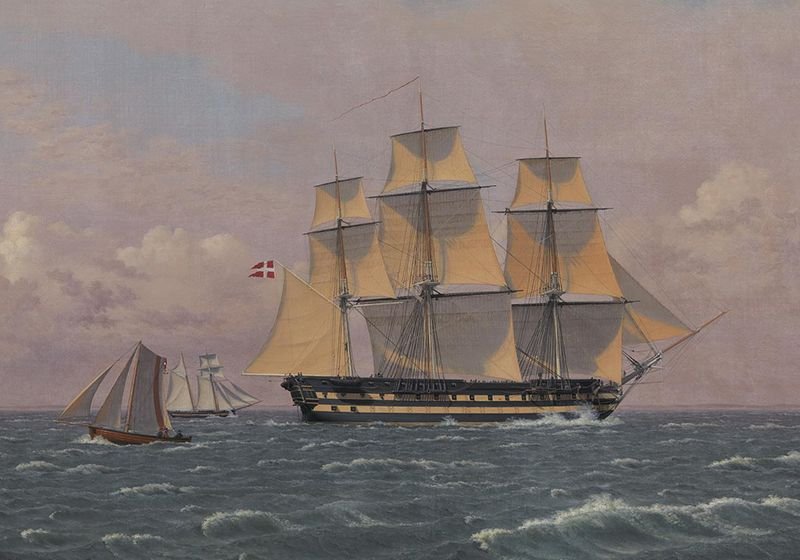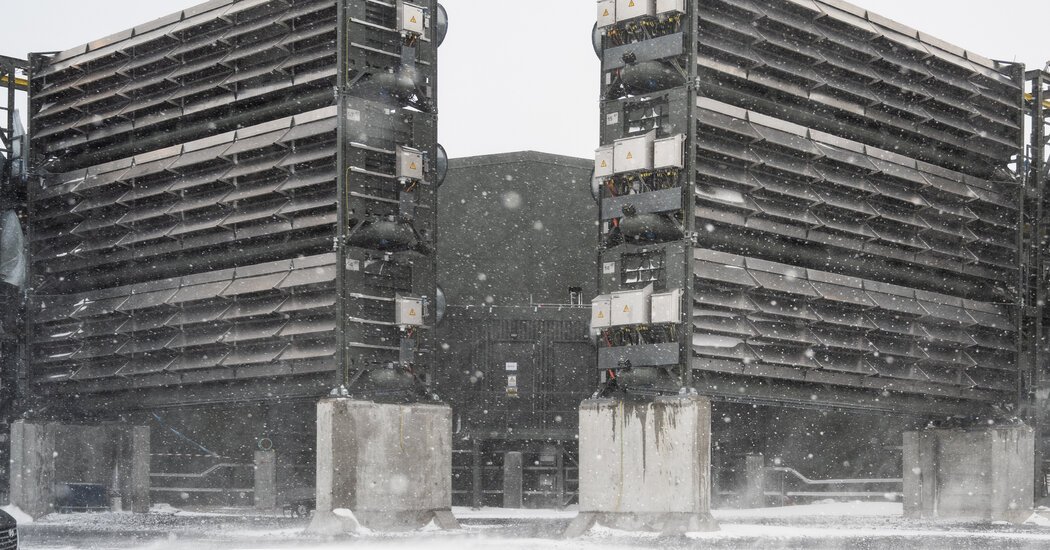Painters leave their mark on history through the artworks that they leave behind. Underneath the paint layers, there are hidden molecular features that can illuminate the artistic process, reveal historic societal factors, and indicate the damage done to these unique pieces over the years. Thanks to modern technologies such as mass spectrometry, heritage scientists study the proteins and metabolites found within cultural heritage objects, from paintings and textiles to mummies and historic buildings, to discover how these items from the past were made and how they have aged at a chemical level.
Fabiana Di Gianvincenzo, a postdoctoral researcher at the University of Ljubljana, uses mass spectrometry-based methods to explore proteins present in cultural heritage objects.
Fabiana Di Gianvincenzo
Fabiana Di Gianvincenzo, an analytical chemist and heritage scientist at the University of Ljubljana, collaborates with museums and institutions globally to study organic materials making up a variety of culture heritage objects. In this interview, Di Gianvincenzo discussed her past work at the University of Copenhagen performing proteomic and metabolomic analyses on historic paintings and her current textile project, which has implications for silk conservation.1

What is heritage science?
Heritage science is an interdisciplinary field that connects scientific studies and analyses with the cultural heritage field to gain scientific knowledge about materials with cultural significance. These studies often have two main purposes. One is to understand what materials are present in a specific object. For example, in the past I worked with paintings, learning what materials artists used in their production. This is important because materials will respond differently to restoration techniques. If someone cleans a painting with a solvent, it is important to know the components in the painting so that you know exactly what you are removing and what you want to leave behind.
The second purpose is to understand the damage these materials have incurred and, consequently, how this degradation can be slowed down or prevented. We can understand this not just by studying actual objects from museums, but also by producing reconstructions using the original materials. By inducing artificial aging, we can study how these materials behave over time, how they degrade, and what conditions are best to minimize their damage and preserve them for the future.
You previously analyzed the canvases of paintings by Christoffer Wilhelm Eckersberg and Christen Schiellerup Købke. Why did you choose these works?
These artists were two of the most important painters in Denmark’s history. Their paintings were from the Danish Golden Age, which was a time when art flourished in Denmark in the first half of the 19th century. The National Gallery of Denmark has an amazing collection of their paintings.
Unfortunately, the molecular analysis that we currently do is invasive and disruptive because we need to collect tiny samples from each painting. These Danish paintings were ideal for our study because some material had already been removed from the paintings. In the 1960s, the National Gallery of Denmark restored many paintings using a procedure called lining, where an artwork is reinforced by attaching a new canvas to the back. To do this, a little bit of the original canvas was trimmed, and the museum stored those pieces for future scientific studies. This provided us a unique opportunity to study these paintings without further affecting them.
How did you prepare the canvas samples for the proteomic analysis?

For proteomic analysis of Danish Golden Age paintings, Di Gianvincenzo collected a small sample of each artwork from strips of the canvas’ tacking edges, which were removed during restoration treatments.
Fabiana Di Gianvincenzo
We took even smaller samples from the trimmings for our analysis. We were looking at the ground layer, which is in between the canvas and the paint layer. This acts like a primer, making the paint adhere to the canvas better and creating a very smooth surface. The first step was protein extraction, which we did by exposing the canvas samples to a mixture of a denaturing agent, a reducing agent, and an alkylating agent. This treatment solubilizes the proteins from the solid sample and opens the disulfide bridges, putting the proteins in solution as much as possible.
Then we digested the extracted proteins with enzymes, breaking them up into peptides which we purified and analyzed with tandem mass spectrometry. From these data, we reconstructed the protein sequences, amino acid by amino acid, and compared them to a database of protein sequences.
What challenges did you face during this process?
Extracting proteins from the sample is the most challenging part because the proteins may be already damaged, which makes them harder to solubilize. The conditions that one would use with modern, intact proteins do not always work with cultural samples. For example, we typically have to extract at higher temperatures. Paintings also contain a mixture of materials; inorganic pigments, which are often metallic salts, can negatively influence protein extraction.
Did your proteomic analysis reveal anything surprising about the canvases?
The most interesting thing that we found was the presence of proteins from yeast and various cereals. The proteins indicated that the ground layer was fermented. As we considered all the possible materials that these proteins could correspond to, we eventually landed on this being connected to residual yeast, which is a beer brewing by-product. This has never been found in paintings before. Our finding is also important for its cultural context because beer was a fundamental part of 19th century Denmark’s society and economy. So, finding that material from beer brewing can be found in some of Denmark’s most important paintings is significant for art history as a whole.
We conducted some practical studies to see how the byproduct material would act in a mixture with other components that we expected to be in the ground layer according to previous studies. We knew that there was a hydrophobic oil in the ground layer and a little bit of hydrophilic animal glue. We reconstructed a canvas with this mixture and found that the residual yeast acted as an emulsifier, making the different components stay together and creating a smooth surface upon drying. We think that is why the artists added the residual yeast—it helped make the ground layer mixture easier to work with and more stable.
In addition to protein composition, what else can proteomics tell you about a painting?
I hope that the destructive and invasive aspect of this research will soon not be an obstacle, allowing us to apply this technique to more museum objects.
– Fabiana Di Gianvincenzo, University of Ljubljana
Identifying protein degradation, such as amino acid deamidation, can tell us about the conditions that a painting has been exposed to. We also use this approach to determine if the proteins we find are from the original painting. Protein deamidation is a reaction that occurs spontaneously over time. So, if we see high levels of this modification in our data, then the proteins have probably been a part of the tested material for a long time. This is not always reliable because it depends on the painting’s storage conditions or the material’s preparation.
In this study, we looked at damage in the yeast and cereal proteins from the different paintings. We saw that the level of deamidation in the cereal and yeast proteins was comparable, which told us that they came from the same material that had been exposed to the same conditions for an equal amount of time.
What does your current work at the Heritage Science Laboratory entail?
I’m using a range of techniques, including proteomics, to study silk textiles in a project called SAFESILK. The purpose of the project is to look at the degradation of silk that has been subjected to a process called weighting, where materials not naturally found in silk, such as metal ions, were added to make the textile heavier and to give it different mechanical properties. It has not yet been established whether weighting accelerates the damage of silk museum objects. We are looking at different silk weighting methods to establish what the correlation is between the presence of weighting agents and textile damage.
What do proteomic methods mean for the future of heritage science?
Proteomics is a powerful and informative technique that can be applied to virtually any materials that contain biological residues. In the past two decades, we started using this technique in heritage science, and it has grown really fast. But there is still so much more that we can do. With technological progress, we are able to analyze smaller and smaller samples. I hope that the destructive and invasive aspect of this research will soon not be an obstacle, allowing us to apply this technique to more museum objects.
This interview has been condensed and edited for clarity.
Reference
- Di Gianvincenzo F, et al. Proteomic identification of beer brewing products in the ground layer of Danish Golden Age paintings. Sci Adv. 2023;9(21):eade7686.










